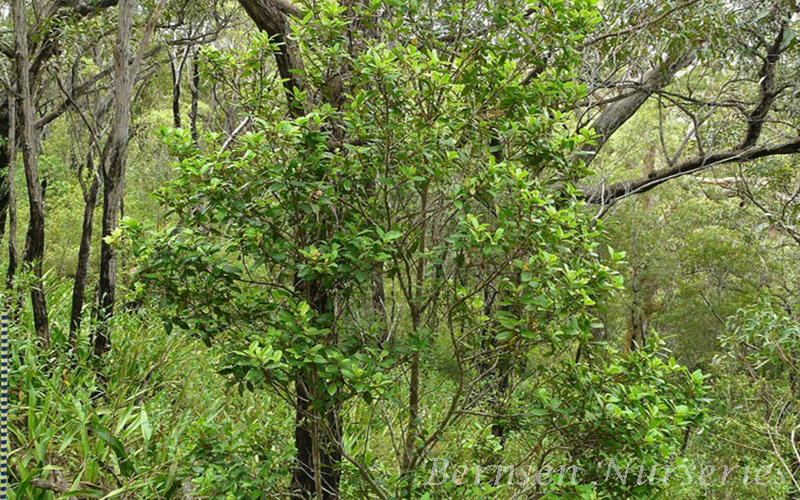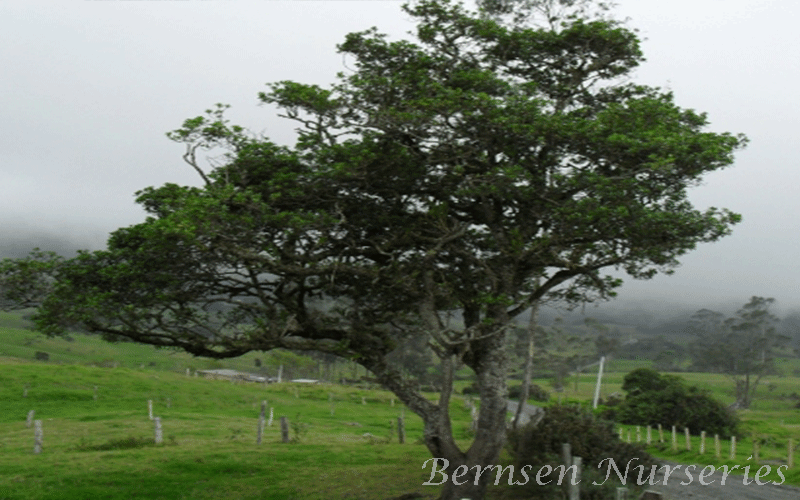MYRSINE TREE Naples
This evergreen shrub, now known as Rapanea punctata, is grown primarily for its smooth green foliage. Myrsine is a dense, vertical growing shrub that can reach a height of 15 to 20 feet. Older plants become spreading and woody with numerous trunks. The attractive leaves of this plant are oval in shape and a medium to dark green color.
Young, vigorous plants in the nursery have well-spaced leaves along the green twigs, but those on older shrubs tend to cluster toward the ends of the stem. Small inconspicuous greenish-yellow flowers occur in clusters that are found along the branches.
Flowers are succeeded by decorative, shiny, black berries; plants of both sexes must be grown close by to obtain fruiting. Myrsine can be utilized in the landscape as an accent plant in a shaded or partially sunny landscape, and is excellent when used in shrub groupings. It is a good background plant in a shrub border forming a fairly dense screen.
Planting: Plant about 6 to 8 feet apart for a quick forming screen. It is also useful as an understory plant and lends itself well to dune conditions.
Myrsine guianensis will adapt to variable soil conditions including poor drainage. This makes it especially useful near foundations or water retention basins since water often sits here after a rainfall.
Regular clipping will be required if used as a foundation planting due to the tendency for the plant to grow 20 feet tall. This shrub grows best in a partial to full shade location in the landscape, and it has a good salt spray tolerance. Native habitat includes the lee side of coastal upland plant communities where soil is sandy with shell fragments. Soil pH is neutral to slightly alkaline and may be poorly drained.
It can also be found in Bald Cypress swamps among other wet site tolerant plants. Myrsine can be utilized in the landscape as an accent plant in a shaded or partially sunny landscape, and is excellent when used in shrub groupings.




